Peppers are a popular garden crop that thrives in warm weather. As a result, peppers are one of the most beneficial plants grown in the garden. Peppers are the nightshade family with Tomatoes and Eggplant. Not only is Pepper easy to grow, but there are also countless varieties to choose from, from sweet, like Bell Pepper, to spicy, Jalapeno Pepper, to incredibly hot, like Carolina Reaper. These are the questions every gardener faces when growing Peppers in your garden.
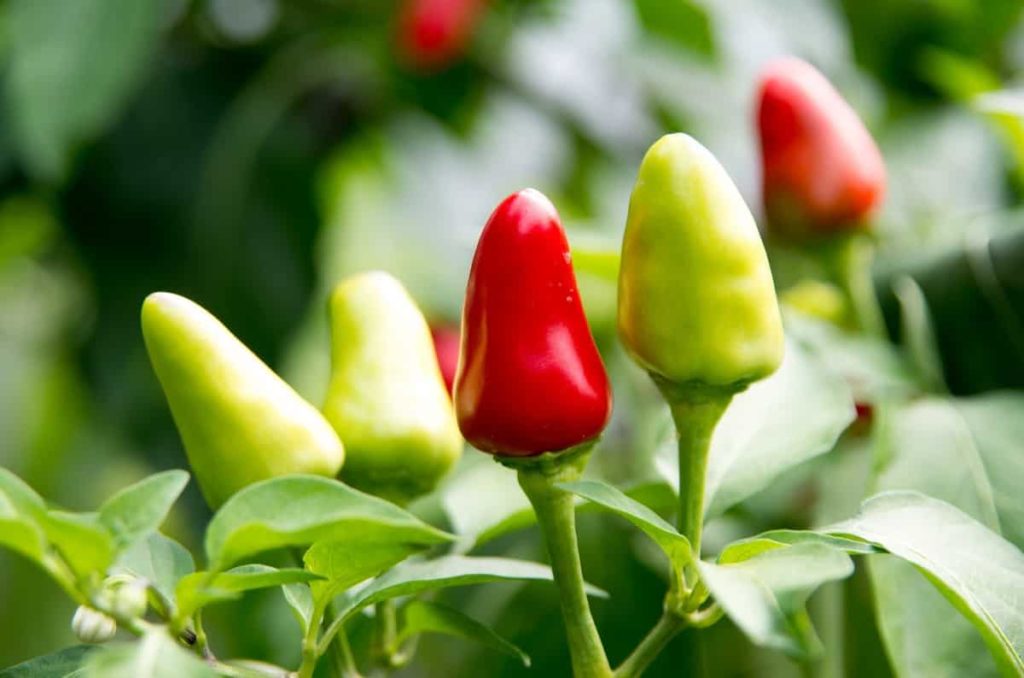
Growing Peppers from seed to harvest
How long do Peppers take to grow from seed?
Sweet Peppers can mature in 60 to 90 days, and hot Peppers can take 150 days. However, remember that the number of maturity days described on the seed packet refers to the days after transplant until the plant produces full-sized fruit. It takes about two months to get Pepper from the flower bud.
If you don’t want to wait long to grow, Capsicum Annuum is probably the easiest to grow. These include Jalapeños, Serranos, Cayennes, Thai Peppers, Anaheim, Hatch, Poblano, and many other ornamentals. They also perform better in cold climates and grow easily at low temperatures.
How many Peppers will one seed produce?
The Peppers plant can produce 6 to 8 fruits per plant. Some varieties with small fruits will produce more. You should keep Pepper plants at least 1 1/2 feet apart, so this helps you plan how many plants to grow. However, some varieties will produce more or less a little more. Ghost Pepper is the least troublesome and most productive.
How often should I water Pepper seeds?
Use a well-drained growing medium in cells, and be careful not to overwater the seedlings; wait until the soil dries up before watering again. Pepper plants should be watered about once a week and allowed to drain well. However, this frequency can vary significantly based on temperature, air, plant size, and growing container. You may need to water your potted Pepper daily during the heat wave.
Pepper plants are particularly susceptible to bringing in overwater; too much water can kill them. Giving them less water can improve the amount and quality of Pepper produced in a plant. Peppers prefer warm temperatures, and permanently moist soil produces a good crop. Extremely hot temperatures and high rainfall or water can affect Pepper plants, causing damping, wilting and poor harvest.
Pouring more water can cause Pepper leaves to become a cause of failure to access enough oxygen and nutrition from the soil. Overwatering usually causes yellow leaves and stunted growth. The most common reason why Pepper plants have overwatered is poor drainage.
Can a Pepper plant live forever?
All kinds of Peppers are grown by gardeners annually: sown, grown, picked, and then compost at the end of the season. Yet these hardworking plants are Perennial and will work happily in winter till next year because of the right conditions. Bell Pepper, Sweet/Italian Peppers, Serrano, Cayenne, Paprika, Hatch Chile Peppers, ornamental Peppers like the gorgeous NuMex Twilight Pepper, and all the fast-growing Jalapeno Pepper plants can last between 1.5 to 3 years.
Now, if they are not taken care of, or your garden is not well maintained, you can never see them live past a single growing season. However, if you properly maintain them, their lifespan can range from 3 to 5 years.
In case you missed it: Growing Bell Peppers On Terrace – Organically
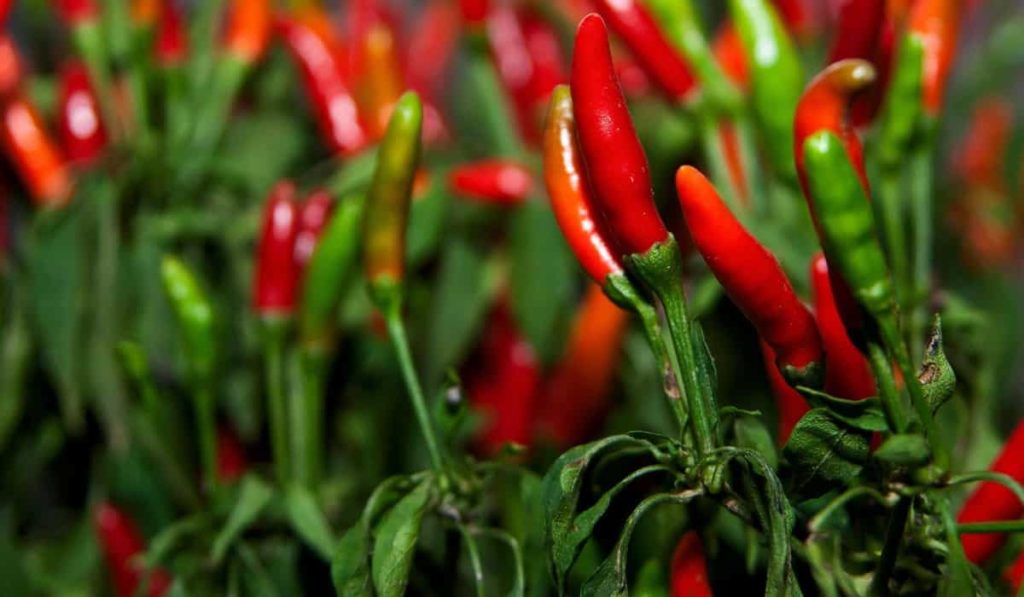
Does picking Peppers make more grow?
If you keep picking fruit when they are still in the immature or green stage, the plant will continue to produce more fruit. So, you should usually cut lots of green Peppers or choose between low orange or Red Peppers. Once the Pepper plant has been harvested in most areas, it ends for the season, and the plant will die back during late fall. However, Pepper production can continue throughout the year in areas with hot temperatures, just as in tropical areas of its origin.
Do Pepper plants need full sun?
Peppers grow in all kinds of soil but work best in heavy, well-drained soil. Plant them in areas where sunlight is available for at least 6 hours daily. Most Peppers will fall their flowers when the day temperature rises well above 33°C and night temperatures above 23°C. Peppers perform well in hot weather with a temperature of 15 to 32°C. However, the plants will die if the temperature goes below the 0°C mark.
Why does my Pepper plant only have one Pepper?
Ripe Pepper plant without flowers or fruit can result from a wrong temperature zone, either too hot or too cold. Another common reason why the Pepper plant is not produced could be blossom end rot, caused by calcium deficiency and occurs when night temperature exceeds 24°C.
While in the starter cup, and immediately after transplant, gently pinch the flower buds to help the plant develop more before flowering. Pick Peppers immediately after ripening. Regular harvesting of Peppers encourages them to produce more. If fertilizing, reduce nitrogen levels after the plant has flowered. Nitrogen is mainly used to fuel the plant while in growth mode.
How big do homegrown bell Peppers get?
The Bell Pepper is ready for harvesting about 14 to 17 days after starting growing fruit. Bell Pepper is ready to harvest when they are strong, quite a large size, and the color you want to harvest. Depending on the variety, the Bell Pepper grows to about three inches in diameter and four inches in height, with a round to block shape. Most are ready for harvesting within 60 to 90 days of planting.
Should you remove lower leaves on Pepper plants?
Peppers don’t need much harvest as much as Tomatoes, but keeping the bottom leaves and stems clean is still important. In addition, it allows for good airflow and light, two important keys to growing a great crop. Pruning Peppers plants to remove yellow spotted or rotten leaves weekly leads to limiting common fungal diseases in Peppers. You should also cut any leaves or branches in direct contact with the soil, whether higher up on plants or arch down to touch the soil.
Whether you prune your Pepper plants or not, you think that for maximum production, you should pinch the flowers first before transplanting your Pepper plants (or if they are direct seeded at your location, pinch some flowers first to encourage more growth). If the right time is set, proper pruning encourages strong stem, good branching, disease and reduced pest stress, fruits that ripen quickly and evenly and result in better products for many types of Pepper. Although the Pruning of Peppers is not 100% necessary, it can improve the plant’s health.
In case you missed it: Growing Peppers – Tips, Ideas, And Techniques
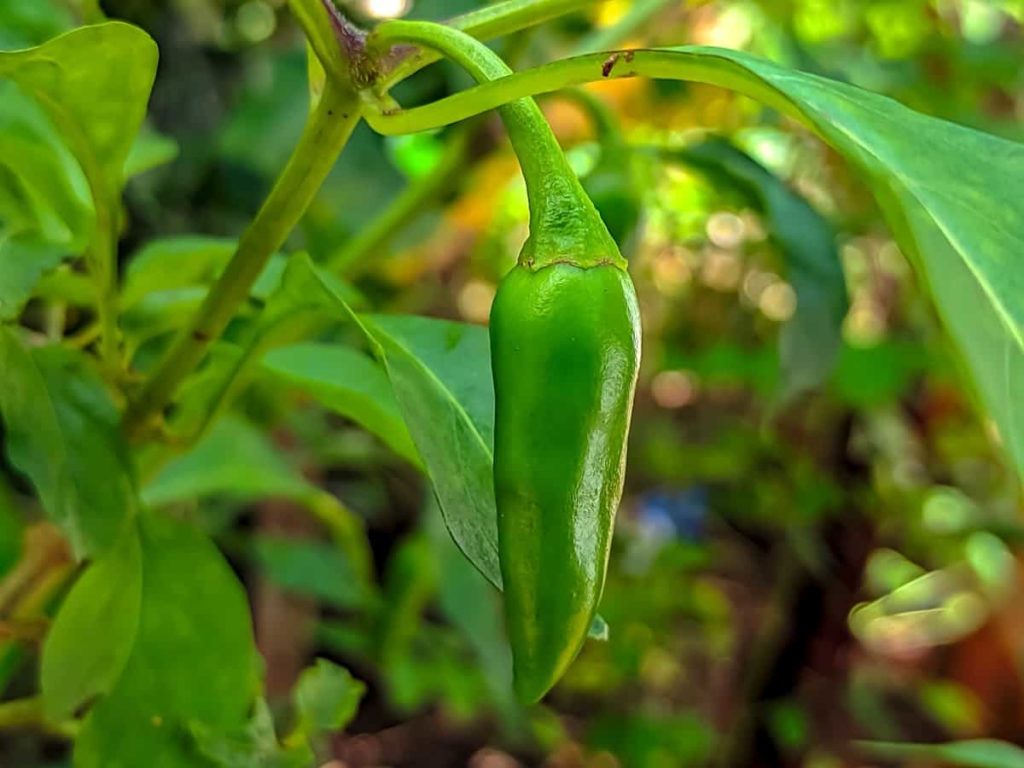
How often fertilize Peppers?
Peppers have a big appetite, so they need a lot of organic food. Continue to supply liquid fertilizer to your plant after the first month, and cut back feeding every 14 to 21 days. This will help the Pepper plant to boost energy for continued growth but not too much to overpower the plant. Usually, balanced fertilizer works best for the Pepper.
But if your soil testing shows you have enough phosphorus, you should choose less or no phosphorus fertilizer. Nitrogen is important for stimulating good Pepper growth, but you must know the best time to fertilize Peppers to get the best results.
Why are my homegrown Jalapeños not spicy?
Most of Pepper’s heat does not come from Pepper’s fleshy walls. Instead, it comes from a white membrane inside the Pepper. If this membrane is removed (along with seeds that have some heat), you will extract a lot of spiciness from your Jalapeno. Pepper crops that are not hot may be a combination of soil and site conditions, different types, or even poor cultivation methods. Pepper heat is in the membranes around the seeds.
If you get healthy fruit, they will have a full interior of the pithy hot membranes and a high heat range. To make your Peppers hot, give them a dose of sulfur in the soil. You can put unlit matches in the hole before planting your Pepper plant. Since match heads contain sulfur and are available at cheaper rates, they can be used to add extra fire (sulfur) to your Peppers.
Do Peppers grow better in pots or the ground?
Pepper plants well to grow in containers that often stay small but mature first. Each plant should have two gallons or a large container, which is deeper than wide. Small Peppers (less than a foot high) grow well in two-gallon containers, but large plants need at least five gallons of containers. You can grow Peppers in any container if it is large enough and has good drainage. You plant Pepper in deep beds, 18 to 24 inches of soil depth, for the best crops and healthy plants.
Why is my Pepper plant flowering but not producing fruit?
The most common reasons for the flowering of Bell Pepper plants but not fruiting are lack of pollination, incorrect growing temperatures, or poor soil conditions. Lack of sunlight and incorrect watering also play a role in Bell paper’s ability to produce fruit. Peppers (especially Bell Peppers) are sensitive to high and low temperatures during blooming. When the day temperature rises above 30°C or drops below 16°C at night, pollination and fruit sets usually do not occur.
Is Epsom salt good for Pepper plants?
Epsom salt can be particularly beneficial for vegetable gardens with Peppers. The Epsom salt used as a foliar spray or soil addition will help Pepper plants grow and produce large, delicious fruits. Spray the plant with 4 cups of water with 1 tsp Epsom salts. This gives the Peppers a magnesium boost, which facilitates blooming, hence fruit. Respray plants after ten days.
How long does it take for green Peppers to turn red?
Some types of Pepper remain green, even when completely ripe, and can enjoy that way. Others can turn into yellow, orange, or other colors when ripe. If the Peppers stay on the plant for longer, they will naturally turn into the stoplight sweet yellow and red Peppers we love. Peppers are like Tomatoes that will keep ripening after picking.
Pepper plants are finicky about their conditions, especially in temperature. Bell Pepper works best when the day temperature ranges from 21 to 26°C. Peppers can’t be ripe if the temperature drops far below it. You can harvest Peppers at that point, even if they are still green. However, it may take another 2 to 3 weeks after the Bell Peppers matures to turn red. Leave your Peppers on sunny windows in a hot room for a few days. They will start turning colors and become ripe in the sun.
In case you missed it: Growing Peppers in Pots from Seed, and Cuttings
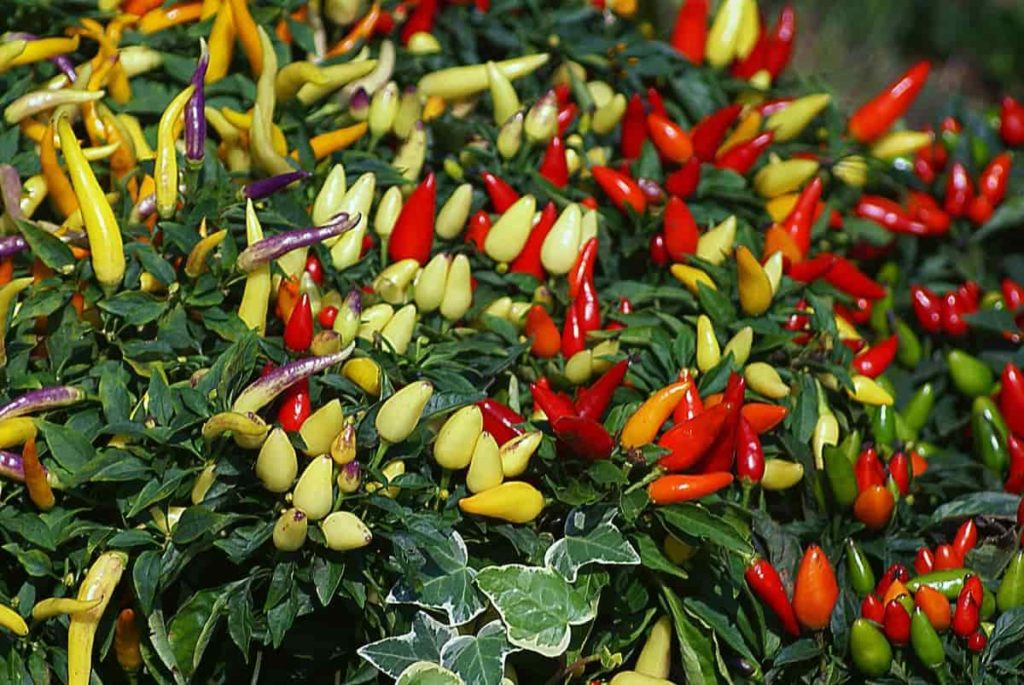
Why are my Bell Peppers so small?
Bell Pepper needs to be watered well, and so do they need to be fed well. Peppers need soil rich in organic matter to produce large, healthy fruits. A lack of nutrients in the soil can result in the growth and small Bell Peppers. They can also be stunted by cold weather, especially cold nights. Keep the Peppers warm and wait to plant outside until the weather consistently warms up to 15 to 21°C at night. After hot weather comes and the soil is hot, Peppers should start taking off.
What kind of soil is best for hot Peppers?
Most Peppers thrive in sandy, loamy soil. This means that soil is made mainly of sand and silt, with only a touch of clay. Regardless of your soil composition, compost and other heavy organic materials will move your soil in the right direction. Peppers thrive best in soil with a pH between 6.2 and 7.0, although they can withstand little alkaline conditions of around 7.5. You can mix a few inches of manure to the top of the existing soil.
How deep do Peppers need to grow?
Set the Pepper plants in a hole twice as wide as the seedling root ball and about 1 inch deep, so a part of the stem is below the soil level. You want Pepper seedlings to be deep so that the bottom set of leaves on the stem is just above the soil level. Peppers grow best in hot weather. Therefore, plant them only when all the risk of cold weather passes. Plant fall Peppers 12 to 16 weeks before the first expected frost.
Are coffee grounds good for Pepper plants?
Coffee grounds are the best nitrogen source and can give healthy growth to your Pepper plants which is why Peppers love them. You can sprinkle the coffee grounds around the plants in the garden bed. From there, they break into the best nutrition for your plants. Coffee grounds may be beneficial for your Pepper plants, but too much can lead to your plant having many leaves but no Peppers. Instead, aim for a ½-inch coffee ground around the plant’s perimeter and work in the soil above. This amount should be sufficient for two months.
Are eggshells good for Pepper plants?
Eggshells can act as a good fertilizer for Pepper plants. They provide nutrients and help to correct soil pH levels due to rich calcium levels so you can get healthy plants over time. Prevent the blossom end rot by fertilizing your Peppers with eggshells. Plants absorb calcium from eggshells, and most grow free of problems. For maximum effect, sprinkle eggshells in each hole before planting.
Why not plant beans next to Peppers?
Peppers and Beans can live together. They can both benefit the soil. Sometimes, however, Bean vines can spread very aggressively and choke Pepper plants.
Should you plant tomatoes and Peppers together?
The benefits of planting Peppers and Tomatoes together are you get maximum yield from a small space, improve soil conditions, focus on water and nutrient needs, and attract the same pollinators. In addition, these two vegetables can be trellised to maximize their production. You can plant Tomatoes and Peppers in the same garden, but be sure to rotate them to a different area during the successive growing season so they don’t pass on overwintering pathogens. In addition, tomatoes prevent soil nematodes and beetles.
Can you keep the Pepper plant alive in winter?
Peppers can survive finely in cold temperatures and will grow very slowly. If you are in a where frost or freezing conditions are encountered, you should protect Peppers plants. You can keep your overwintering Peppers indoors are a great way to start your next growing season with healthy, mature plants.
In case you missed it: Growing Hydroponic Peppers for Dummies
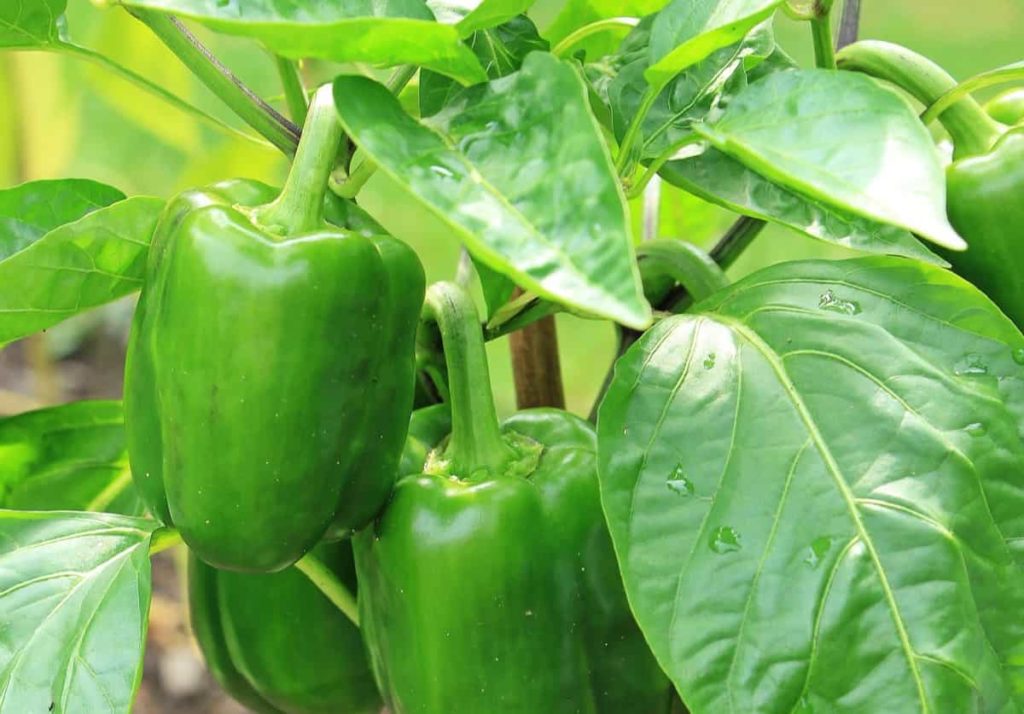
With a bit of Pepper winter care indoors, you can keep your Pepper plants alive through winter frost. Cold tolerant varieties may also be better able to recover from frost damage than plants that can’t handle low temperatures.
When should I pick my Peppers?
The best way is to observe color changes when Peppers are ready to be picked. Almost all types of Pepper will undergo color change during the ripening process. The time for Pepper harvesting for many hot varieties of Peppers, such as Jalapenos, is often indicated when the fruit is dark, dark green. Other hot Pepper varieties such as Cayenne, Serrano, Anaheim, Tabasco, or Celestial mature after changing from green to orange, reddish brown, or red.
You can harvest Bell Pepper when full size, about 3.5 to 4 inches, and strong to touch. However, if you have planted any other type other than green, you should wait until the Pepper turns to the expected color. Sweet Bell Pepper varieties include red, yellow, purple, white, and chocolate brown.
What month do you plant Pepper seeds?
Warmth is essential for germination and to encourage strong seedlings’ growth, so you need to be started indoors or under cover, mainly in the climate. You should sow seeds in late winter or early spring, not more than two months before your last frost date. And Pepper plants are not planted immediately after the first frost. Sow seed in pots or plug trays with starting mix. Space seeds cover at least an inch across the surface with a little more mix.
Why are my baby Bell Peppers falling off?
Sometimes Peppers fall from the plant due to heat. Heat waves stress plants, often dropping flowers, bending leaves, and drinking more water. You think of Peppers as hot weather plants, but when temperatures are above 35°C and below 13°C, both flowers and immature Peppers fall.
Peppers fall from the plant when the temperature reaches 24°C at night, and sometimes baby Peppers falling from plants are the result of a drastic change in rain or sunlight. Uneven water or drought will cause Pepper blossoms and bud drops. Avoid overhead water and use a soaker hose or drip irrigation instead. Water regularly and deeply.
In case you missed it: Container Organic Chilli Gardening (Peppers)
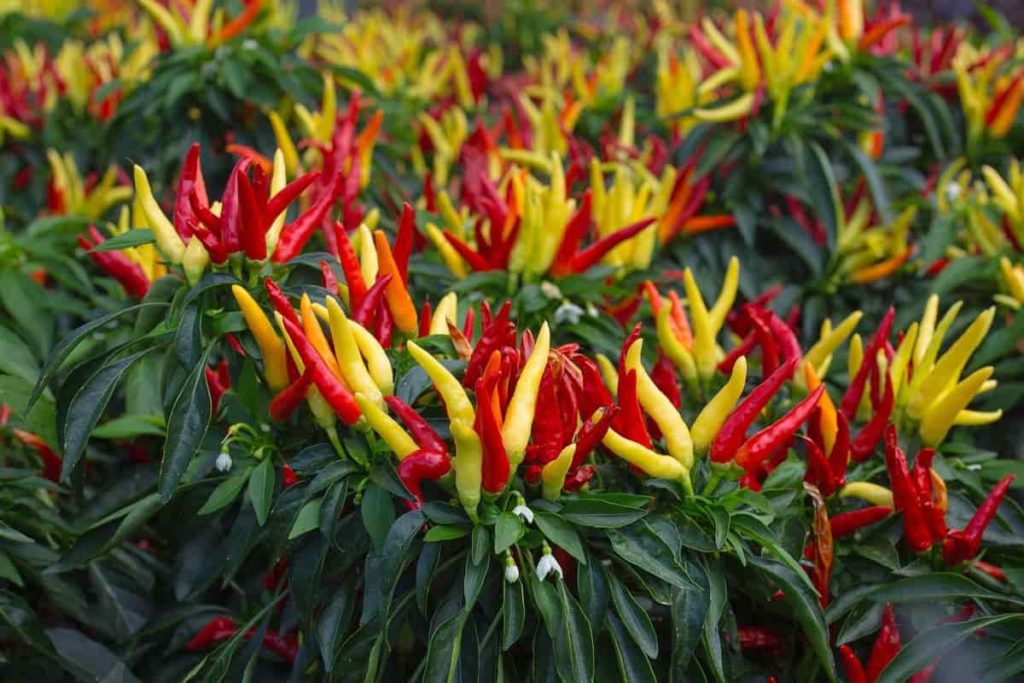
Should you cage Bell Peppers?
Putting Pepper plants at stake may not be necessary to grow them in your garden, but there are benefits. The Pepper stakes not only help support plants and keep them straight but also reduce the sunscald on the fruits and help keep them away from the soil, where they are prone to pests or rot. For large Pepper varieties such as Bell Pepper, cages are recommended. Its fruit weight can cause its stem and branches to deteriorate and fall to the ground during strong winds.
Conclusion
Peppers demand warmer temperatures, not too cold and not too hot, organically rich soil, and even soil moisture, not too low and not too much. Give the Peppers these best conditions; they will produce until the first frost in autumn. This article will explain to you the most common questions and answers about Peppers.
- Flower Garden Designs and Layouts for Beginners
- Planting and Spacing Techniques in Papaya: A Beginner’s Guide
- Growing Gold: Essential Techniques for Planting Pineapples
- How to Make Kalanchoe Plant Bushy: Home Remedies and Solutions
- 11 Reasons Why Your Gardenia is Not Blooming: Home Remedies and Solutions
- Eco Elegance: The Guide to Designing a Drought-Tolerant Landscape
- Gardening on a Slope: Strategies for Hillside Landscaping
- Nourish and Flourish: Top Organic Mulches for Thriving House Plants
- Everything You Want to Know about Indian Mogra Flower: Discover Uses and Growing
- Green Thumb Success: Expert Tips for Cultivating Greenhouse Pumpkins All Year Round
- Maximize Growth & Flavor: The Ultimate Guide to Companion Planting in Herb Gardens
- How to Control Rhododendron Problems Naturally: Home Remedies and Organic Ways to Fix Them
- Natural Magic: The Remarkable Benefits of Cinnamon for Plants
- Best Steps to Revive Dying Tulip with Natural and Organic Treatment
- 10 Reasons Why Your Angel Trumpet is Not Blooming: Remedies and Treatment
- How to Fix Periwinkle Leaf and Flower-Related Problems: Natural Remedies and Solutions
- How to Fix Zinnias Leaf and Flower Problems: Discover Natural and Home Remedies
- Organic Steps to Induce Lemon Tree Flowers: A Comprehensive Guide
- Bloom Booster: Crafting the Perfect Homemade Bougainvillea Fertilizer
- Optimizing Growth: A Guide to Applying NPK Fertilizer for Potted Plants
- 10 Best Homemade Fertilizers for Rubber Plant: DIY Recipes and Application Method
- How to Boost Female Pumpkin Flowers: Effective Steps for More Flowers and High Yields
- Transform Your Indoor Garden: Top Benefits of Pink Salt for Houseplants
- 10 Best Homemade Fertilizers for Peacock Plants (Calathea): Easy DIY Guide
- Unlock Blooms: 9 Reasons Why Your Potted Chrysanthemum is Not Blooming
- 8 Reasons Why Your Potted Hibiscus is Not Blooming: Fix it with Simple Solutions
- Unlock Blooms: 9 Key Reasons Your Potted Frangipani Won’t Flower
- 10 Reasons Why Is My Ice Plant Not Blooming: Remedies and Treatment
- 10 Reasons Why My Potted Hydrangea Not Blooming: Treatment and Remedies
- 10 Reasons Why is My Wisteria Not Blooming: Remedies and Treatment
- 10 Reasons Why is My Goldfish Plant Not Blooming: Remedies and Treatment
- Maximize Your Space: Ultimate Guide to Balcony Gardening with Grow Bags
- 10 Reasons Why Your Iris is Not Blooming: Remedies and Treatment
- 10 Reasons Why Your Anthurium Plant is Not Blooming: Treatment and Remedies
- 10 Reasons Why Your Aquaponic Plants Are Not Flowering: Remedies and Treatment
- 10 Reasons Why Your Agapanthus is Not Flowering: Remedies and Treatment